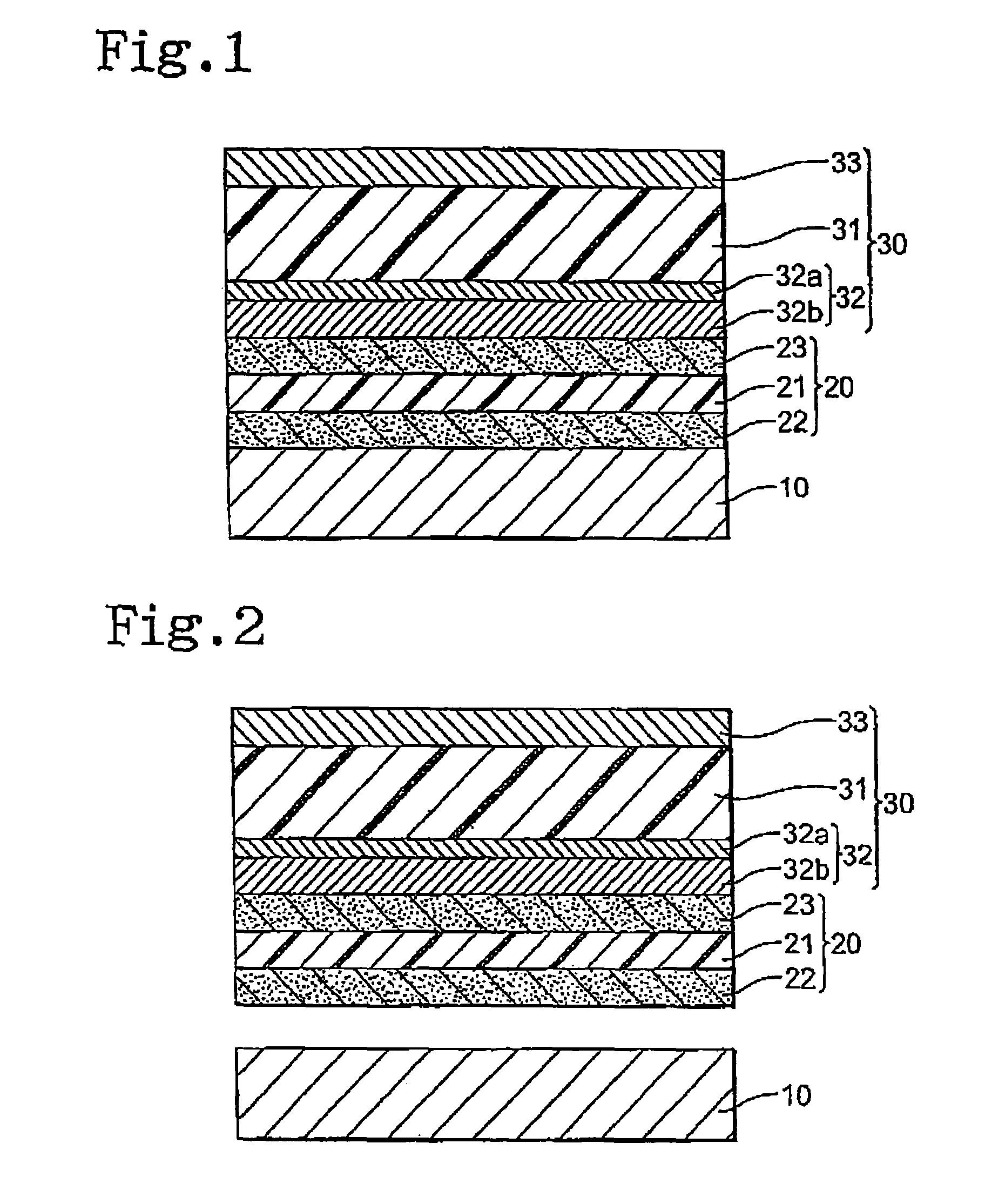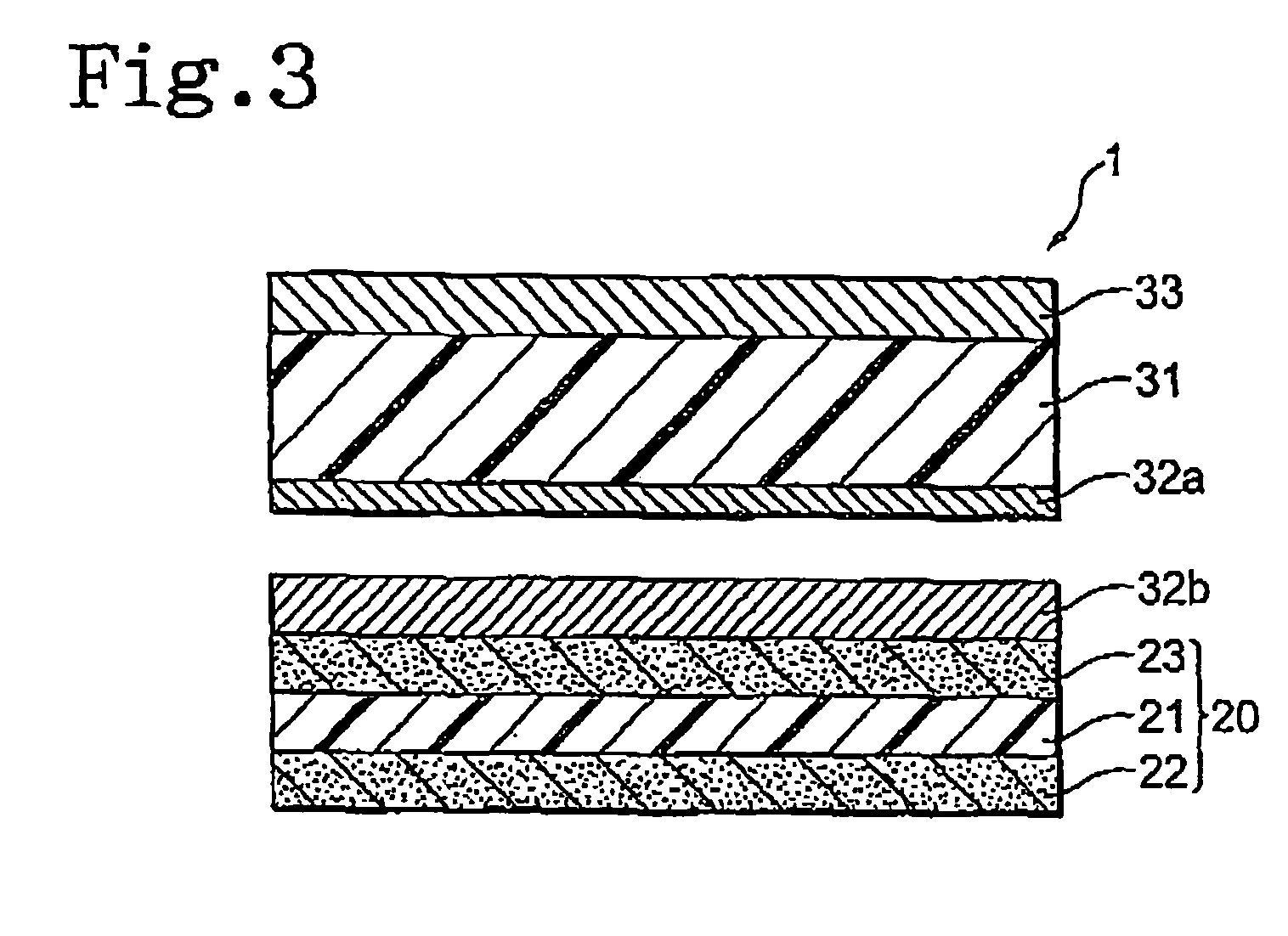Method of manufacturing wiring board
a manufacturing method and technology of wiring boards, applied in the field of manufacturing wiring boards, can solve the problems of large distortion in the resin layer, excessive thick product, and inability to meet the recent demand for a reduction in the thickness of wiring boards, so as to improve the productivity and reliability of wiring boards, and the effect of easy separation from the adhesive layer
- Summary
- Abstract
- Description
- Claims
- Application Information
AI Technical Summary
Benefits of technology
Problems solved by technology
Method used
Image
Examples
Embodiment Construction
[0021]An embodiment of the invention will hereinafter be described in detail. Note that like components are denoted by like reference symbols and will not be further explained. It is assumed that vertical and horizontal positional relations are based on the positional relations shown in the drawings, unless otherwise specified. Also, a dimensional ratio of the drawings is not limited to a shown ratio. Moreover, the following embodiment is for explaining the invention, and is not intended to limit the invention to the embodiment only. Furthermore, various modifications of the invention may be made without departing from the gist of the invention.
[0022]FIGS. 1 to 3 each are a process drawing showing a state of manufacturing of a wiring board in accordance with an embodiment of a method of manufacturing a wiring board according to the invention. In this embodiment, first, a support substrate 10 is prepared. Materials for the support substrate 10 are not particularly limited as long as ...
PUM
| Property | Measurement | Unit |
|---|---|---|
| thermally foamable | aaaaa | aaaaa |
| density | aaaaa | aaaaa |
| dielectric | aaaaa | aaaaa |
Abstract
Description
Claims
Application Information
 Login to View More
Login to View More - R&D
- Intellectual Property
- Life Sciences
- Materials
- Tech Scout
- Unparalleled Data Quality
- Higher Quality Content
- 60% Fewer Hallucinations
Browse by: Latest US Patents, China's latest patents, Technical Efficacy Thesaurus, Application Domain, Technology Topic, Popular Technical Reports.
© 2025 PatSnap. All rights reserved.Legal|Privacy policy|Modern Slavery Act Transparency Statement|Sitemap|About US| Contact US: help@patsnap.com



